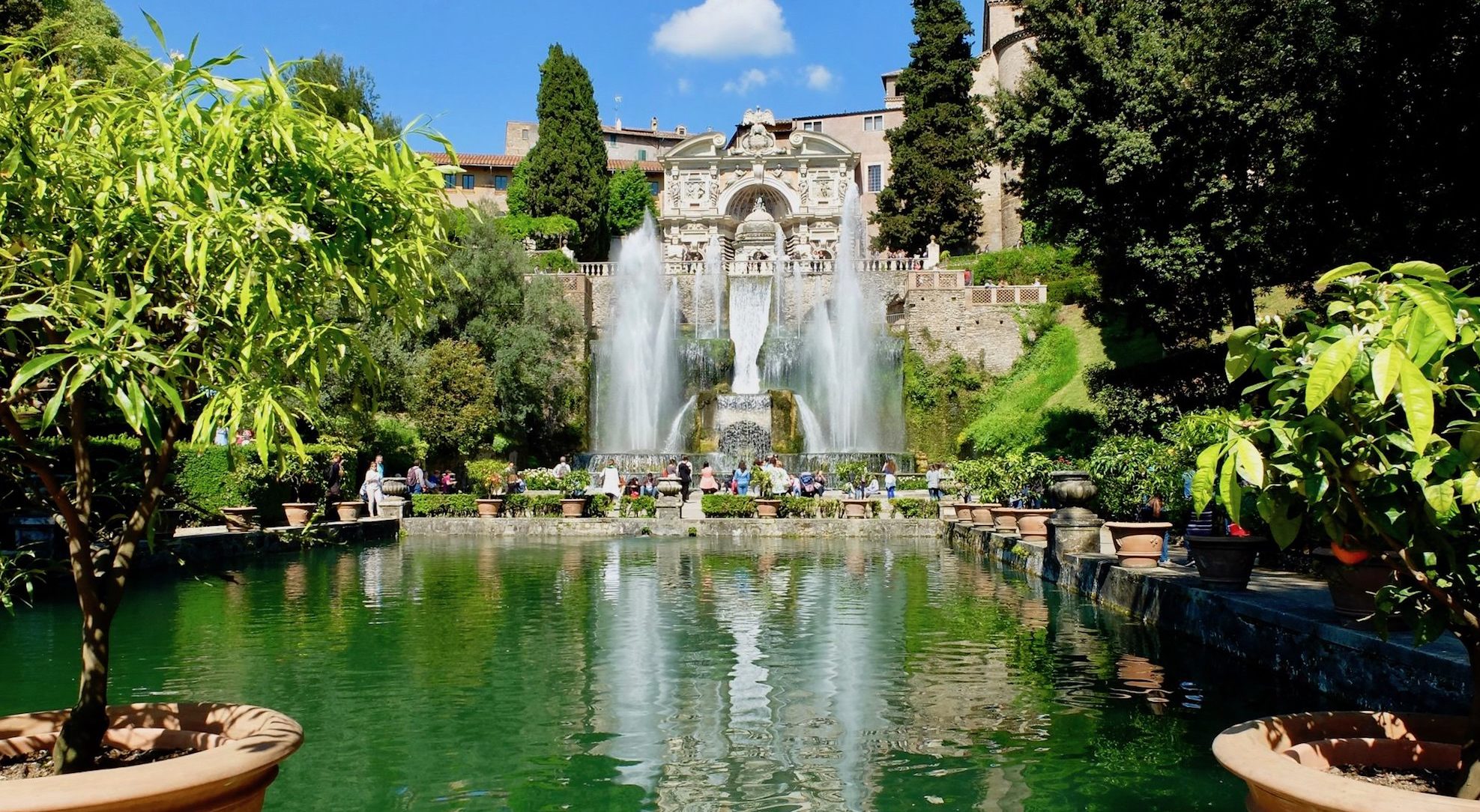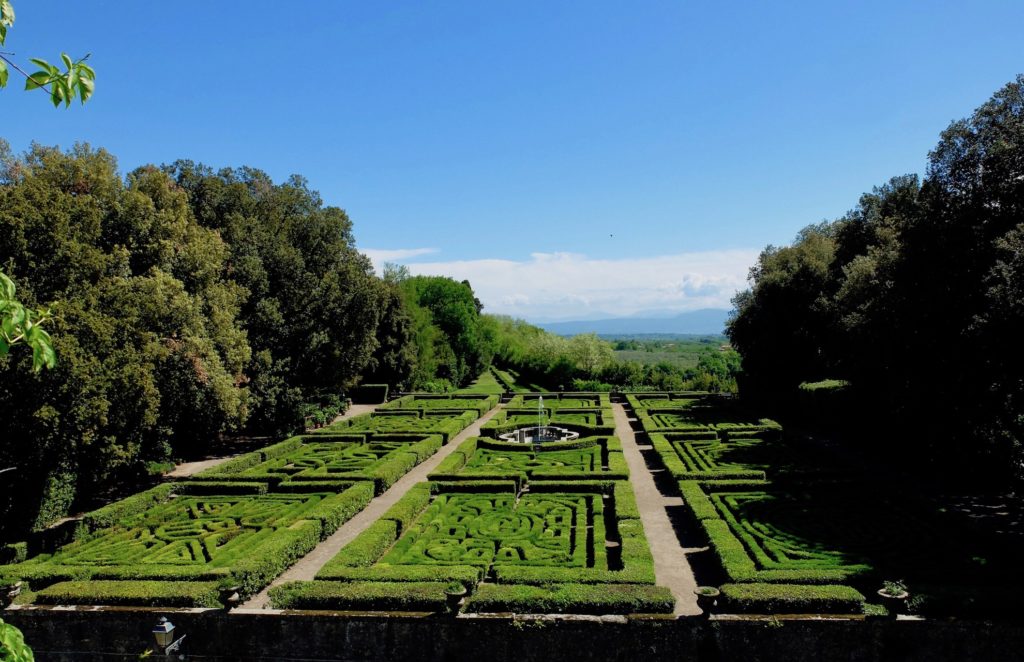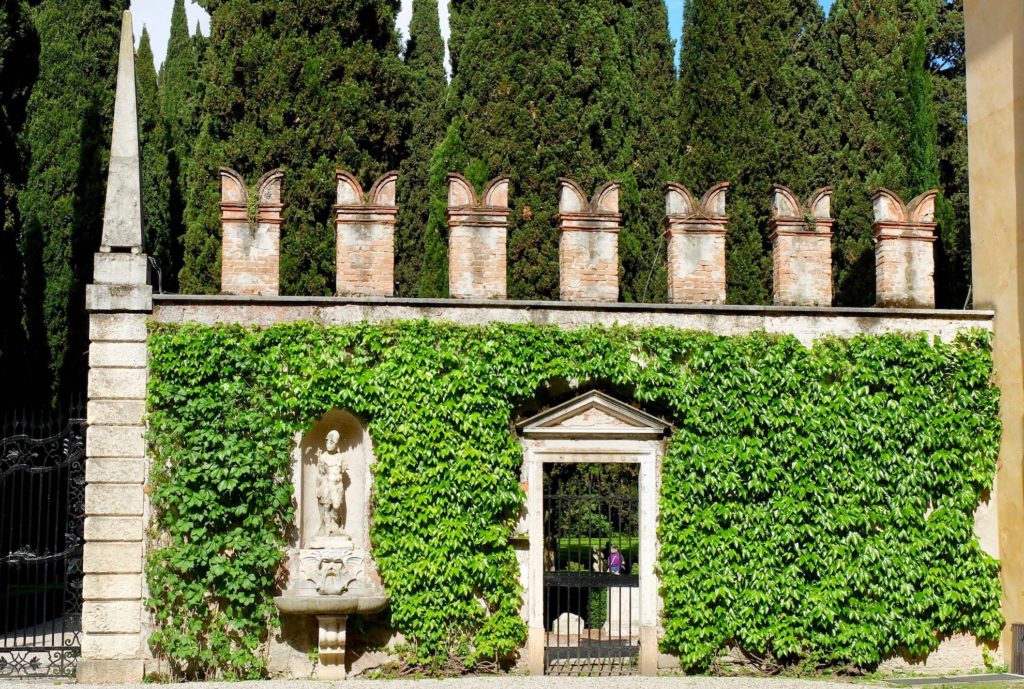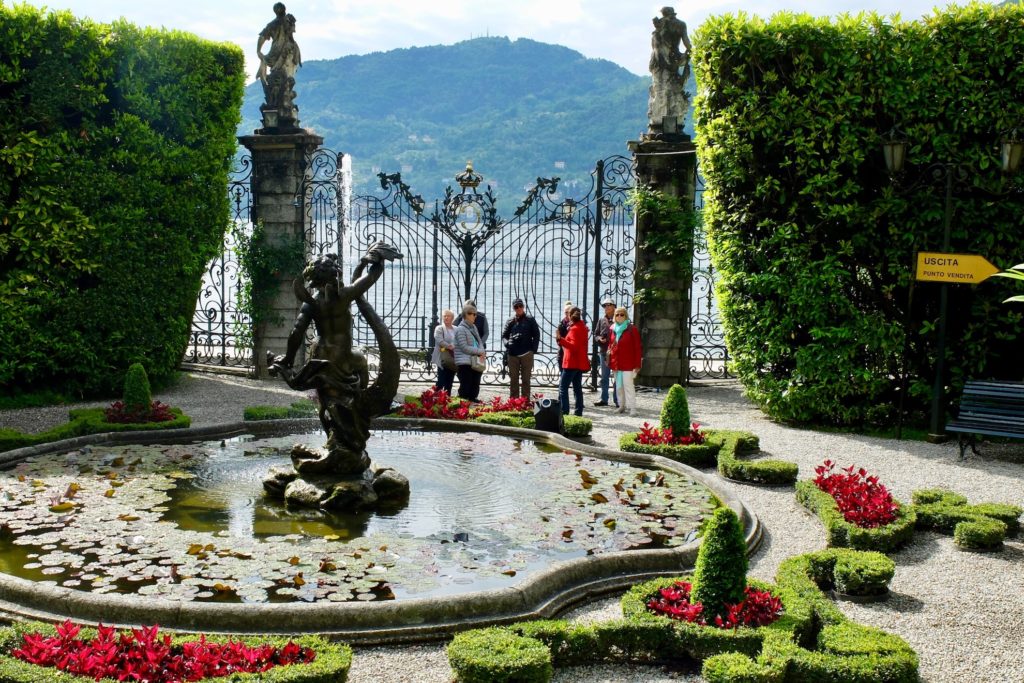
10 Jun GORGEOUS GARDENS … AND MUCH, MUCH MORE
Spring in Rome is just about perfect weather for exploring gardens, and this year our group of nine travellers saw Rome at its best.
We spent our time in Rome with our fantastic local guide Sara, an art historian who took us to the little town of Tivoli to explore its two landmark attractions: Villa d’Este and Villa Adriana. These are serious historical sites. Villa d’Este and its completely over the top gardens with their famous fountains, were the creation of a troublesome cardinal who was relegated to this Roman outpost to keep him from interfering in the politics of the Vatican at the time. It’s a real statement of his wealth and power. Villa Adriana was the summer palace of the well-travelled emperor Hadrian, an accomplished architect and art lover. Sara brought the whole landscape to life with her stories of these ancient sites.
May 1 is a national holiday in Italy and the streets of Rome were thronged with people and parades. Sara joined us again to explore some of the major sites of the Eternal City, including a brief but miraculous interlude when we were almost the only people in the normally overcrowded Pantheon. It was a special day mingling with the locals on Piazza Navona and exploring the back streets of Rome with a Roman insider.
A third great highlight was our visit to the Vatican Gardens, only accessible by tour and a welcome escape from the crowds of people queuing outside the Vatican Museums. We found ourselves wandering through peaceful gardens, so quiet that we could hear birdsong, and enjoying the rose gardens that contain flowers of particular significance to the Catholic faith, including one variety chosen by Pope Francis himself.
That afternoon we travelled to Giardino di Ninfa, south of Rome, an abandoned medieval village that is tucked underneath a mountain range and has developed its own microclimate.
On our way to Florence we stopped in at a castle in a medieval town called Vignanello, known for its historic box hedge garden. We visited the castle and rubbed shoulders with Italian aristocracy: the utterly charming princess who owns the castle showed us around!
We had a lovely lunch at a little restaurant that’s been in business since the 1500s, and were introduced to cucina povera, the traditional food of the common people. The verdict? The common people ate well: we had an outstanding meal including a delicious bean stew that formed the staple diet of the local people.

We always love going to Florence because it gives us a chance to spend time with an old friend, Lior, who is one of the city’s best guides. Lior is always keen to tailor our walking tour to the interests of the group, and this group was interested in the history of Italian art. Lior was delighted: his special interest is in Renaissance, Mannerist and Baroque art. He explained the differences between these fascinating art periods and took us to Santa Trinita in the centre of Florence where we learned to look at paintings by artists such as Monaco and Ghirlandaio in a completely new light.
Despite the influx of tourists, Florence retains plenty of unique gems, such as the pietre dure workshops that Lior took us to visit and, some of the group would say, the absolutely world class shopping that many of us indulged in during the free hours we had!
There are several wonderful villas and their associated gardens in and around Florence, and during our time there we visited several of them: the Torrigiani, the largest private garden within a European city, where the marquis himself took us on tour and regaled us with family stories; the Bardini garden high above the city where you feel as if you can reach out and touch the rooftops; Castello, where Cosimo de Medici grew up and where our group was charmed by the high school students who were practising their English by guiding visitors around the gardens; and Villa Gamberaia, beautiful even in the rain!

On the way to Verona we stopped in at a traditional acetaia outside of Modena, where we learned how Traditional Balsamic Vinegar of Modena is made, sampled some of the goods and contributed to Italy’s gross domestic product with our purchases.
We arrived in Verona to rain and more rain but this did nothing to dampen the group’s spirits. Brandishing umbrellas, our intrepid travellers set off to explore the cityscape with its fabulous urban architecture, glorious red marble pavements peppered with fossils, its central Roman arena and its piazze buzzing with street life.
Of all the cities we visited this had to be the group’s big favourite. And the city rewarded us: on our second day the sun came out. What better way to see Giardino Giusti, a little marvel hidden away in the centre of Verona, with is maze, low box hedges, lines of cypresses that were planted by the original owner to remind him of his Tuscan origins. We climbed the hill for the gorgeous view back to the city. From Verona we took a day trip to Villa Pisani, the fabulous Palladian inspired Veneto villa, which truly took our collective breath away. Our keen gardeners found unusual specimens in the gardens, including an English wood complete with wild flowers; we were also fascinated to learn about the lifestyle of the Venetians during the period in which these villas were built and how the architecture functioned.
The final stage of our tour took us north to the lakes, to Bellagio on Lake Como, where we enjoyed its spectacular scenery, visited the gardens at Villa Carlotta and took a day trip to Lake Maggiore to visit what might have been the favourite garden of the trip, Isola Bella. This fantastic and arguably over the top Baroque garden, complete with white peacocks strutting the paths, was built by the Borromean family on an island in the middle of the lake.
Lake Como turned on the most beautiful weather for the last day of our tour, and we departed Bellagio and Lake Como on a glorious sunny day. The group had discovered not only the beauty of Italian gardens, but the joys of Italian wine and food as well – as one member of the group said in parting, ‘It was much, much more than the gardens!’
We’re running our Great Gardens of Italy tour again in the Italian Spring of 2018 when we’ll be including Castel Gandolfo, the location of the Pope’s summer palace, for the first time.

